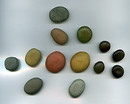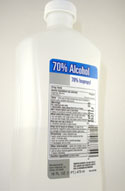3 More Ways to Measure Polymer Clay
A few posts back, I talked about using the cookie cutter method to accurately measure polymer clay. While that's a quick way to do it, sometimes one of these methods might work better for a particular task:

Use a polymer clay template. Polymer clay templates
are clear plastic sheets with holes for measuring balls of polymer clay. They also include diagrams showing Fimo, Sculpey, Premo & Cernit clay bars, so you can determine clay amounts for 1/4 block, 1/16 block, etc. About.com's Miniatures site has an article with more info about polymer clay templates.
- What it's good for: including standardized measurements in project instructions for someone else to use; giving measurements based on package sizes; determining how much of a package of clay a project uses (to help you determine costs).

Use a Marxit. A Marxit
tool (also called a Polyruler) has equally-spaced indentations along each of its 6 sides, with increments ranging from 3 mm to 20 mm. If you're a seamstress and don't want to make an extra purchase, you could also use your sewing guage. [Sewing guage tip via Katherine Dewey's Creating Life-Like Animals in Polymer Clay, reviewed here.]
- What it's good for: getting equal-sized slices of canes; cutting even strips from a sheet of clay; cutting lots of same-sized pieces from an extruded snake
- Slice & dice. The simplest methods are sometimes the best. As Sue commented on my previous post, cutting a ball in half is a good low-tech way to get equal amounts. If you don't trust yourself to cut a ball right down the middle, try rolling it into a log and using a ruler to find the halfway point.
- What it's good for: making measurements when you don't have (or don't want to bother with) special tools; making same-sized body parts for a sculpture
Any other suggestions?









